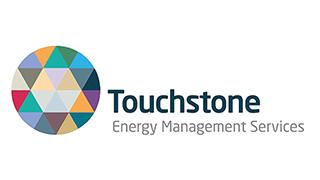A new guide to energy best practice for healthcare estates has been published by the Carbon & Energy Fund. David Mackey outlines the background to the guide, the scope of its contents and usability
Since the Lord Carter Report in February 2016 outlined opportunities for efficiency savings and environmental benefits within the health care system, the NHS, social care, and public health system, IHEEM and HEFMA have been supporting the Carbon & Energy Fund (CEF) in the creation of an essential piece of literature for all trusts - Implementing Energy Strategies in Healthcare Estates: A Best Practice Guide to the Model Hospital.
Completed towards the end of September 2017, Lord Carter of Coles was so impressed with the final draft – he wrote the foreword: “I am delighted to introduce this best practice guide for developing trust-wide energy strategies for the NHS. This is a key area of strategic investment for trusts in meeting the challenge to reduce their estate operating costs. The economic benefits of strategic investment in energy projects are well known and understood by the NHS. National evidence suggests that there is still a lot more the NHS can do. This guide will provide a valuable source of information to estates professionals, who have responsibility for developing viable strategic energy solutions for their organisations.
“The ongoing revenue savings these schemes release provide much needed extra savings for trust boards. These resources can be utilised directly to improve the delivery of frontline patient care, or as leverage to provide capital funds with which to address the growing critical infrastructure and backlog maintenance risks of the NHS estate. Energy costs are currently rising and the outlook going forward is for that trend to continue. I believe this document, produced by the energy industry in partnership with NHS directors, professional and academic bodies, is the most comprehensive source of reference material available to trusts, to enable them actively to develop and deliver commercially viable strategic energy solutions to significantly reduce the annual £650 million NHS energy bill.”
With input from all of the CEF’s specialist team and suppliers, the guide covers every aspect of the energy infrastructure upgrade process, and clearly demonstrates the financial and environmental benefits of each energy technology and the suitability of those technologies for particular situations.
Structured around a ‘Model Hospital’, the guide has been created with exclusive data garnered from over 40 schemes commissioned by NHS trusts that are: already in commission; under construction; or, in the initial stages of sign up. Independent of all suppliers and pricing, the guide offers detailed information on the broad spectrum of technologies available to use within today’s health estate. All of the information featured has been tested and verified from ‘live’ schemes ranging in value from £1 million to £32 million - not lab tested or derived from a sales brochure.
Future innovations
As well as examining technologies available now, the guide also looks at those available in the future and at recent innovations that are starting to become financially viable. Each technology has its own section featuring: a description of the technology; how it can benefit a trust and what to consider. In order to achieve parity across trusts and technology instruction on calculating savings, it demonstrates what you should expect and how it can be employed along with other technologies in real situations. By way of balance it also includes candid explanation of any pitfalls. For example, renewable energy is considered with fuel type. With biomass fuel do you opt for - pellet or chip? Is there suitable onsite storage space for the fuel? What if the space for storage is near a cancer ward, is there an increased risk of infection?
The guide also considers the technology from a technical point of view and provides guidance on how the health estates profession can go about creating a project that may include: procurement, framework or going it alone; the various types of contract available and what works best for what scenario; where the finance may come from and sources of capital available to a trust; what a finance director needs to know - ITFF vs Off Balance Sheet finance; and, the business case procedure and NHSI.
Once the scheme is commissioned, the guide explains about: how to future proof the trust and why some schemes operate at 92 per cent efficiency when the NHS average for CHP is 57 per cent (the difference could be easily in excess of £200,000 per annum). Not forgetting what happens year on year with monitoring and verification, what works and who should be responsible.
Looking to the future, the guide investigates innovations that may well be more easily available in the near future, including: thermal and battery storage; capacity markets; heat pumps; and, district heating schemes. Many trusts have been approached as anchor loads for district heating schemes. The government has committed to provide £300 million of grants and soft loans for these types of projects. What should a trust consider?
The final section looks at how the health estates professional will need to look outwardly for benefit to the NHS in the way it interacts with: the surrounding community via private wire; district heating; and, creating or being part of a virtual power station. In the last few years there has been an increasing take-up of renewable and low-carbon energy generation of electricity at a localised scale and to a lesser extent, there is a move to develop low carbon district heating, energy distribution and storage solutions. This is moving traditional energy delivery away from the total reliance on centralised power generation and more towards an integrated infrastructure, which in the future should be more responsive to consumer demand patterns and renewable energy source availability.
Pre-publication, the 116 page document was rigorously examined by a panel of delegates that included: two distinguished Cambridge University professors, representatives from NHS Improvement, NHS Scotland, heads of estates from several of the larger NHS trusts, the recent and current presidents of both IHEEM and HEFMA, the CEO and FD from CEF and contributing technical authors with more than 50 years’ experience and over 100 projects in the energy services sector.
Highly commended for its suitability for a diverse range of audiences as well as its in-depth content, writing style and visual accessibility (navigation, type styling, tables, illustrations, diagrams and info graphics), one academic remarked: “There are many books that are effectively greenwash, finally we have a guide that has real and usable content.”





